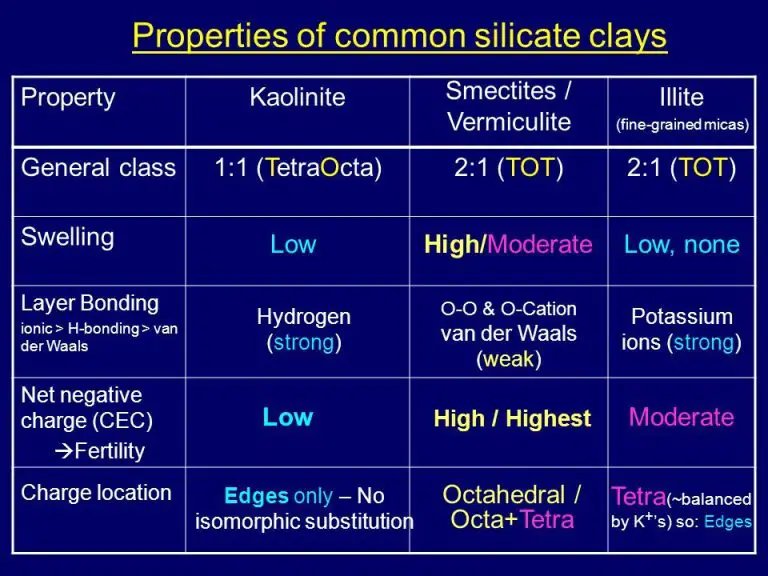Can I Mix Clay Balls With Soil?
What Are Clay Balls?
Clay balls, also known as LECA (light expanded clay aggregate) or hydroton, are small, porous balls made by heating clay at high temperatures. This causes the clay to expand and create a honeycomb structure inside the balls (source).
Clay balls occur naturally when certain types of clay are heated by geothermal processes within the earth. However, most commercial clay balls are man-made. The manufacturing process involves mining natural clay deposits, breaking the clay into small granules, and heating it at temperatures around 1,800°F (1,000°C). This causes the granules to expand and form the porous, lightweight balls.
The resulting clay ball products are inert, pH neutral, and do not contain any nutrients. The porous structure gives them excellent water retention capabilities while still allowing air circulation. Their round shape also provides an ideal medium for healthy root development.
Benefits of Adding Clay Balls to Soil
Adding clay balls to soil provides several benefits for plant growth and health. Two of the main advantages are improved drainage and aeration, as well as better moisture and nutrient retention.
Clay balls have a porous structure that creates small air pockets in the soil. This improves drainage and prevents soggy soil conditions that can lead to root rot and other problems (Source). The air pockets also enhance soil aeration, allowing oxygen to better reach plant roots.

Additionally, the porous clay material absorbs and holds onto water like a sponge. This helps retain moisture in the soil for longer periods between waterings. The water and nutrients stored in the clay pebbles are released slowly over time, providing a consistent supply to plant roots (Source).
By balancing drainage and moisture retention, adding clay balls creates an optimal growing environment for plant roots. The improved aeration and consistent access to water and nutrients supports stronger, healthier plant growth.
Considerations When Mixing Clay and Soil
When adding clay balls to soil, it’s important to consider the clay ratio to avoid compacting the soil. Too much clay mixed into soil can create a dense, heavy mixture that inhibits drainage and root growth. According to the University of California Cooperative Extension[1], the ideal soil composition is 45% mineral matter (clay and sand), 5% organic matter (compost), 25% air, and 25% water. Excessive amounts of clay disrupt this balance.
Before incorporating clay balls, test your current soil composition. A simple soil texture test involves taking a handful of dry soil, running it through your fingers, and observing its properties. Sandy soil feels gritty, silty soil feels smooth, and high clay soil feels sticky. Compacted clay soil forms a ball that cracks when pressed. Use this test to estimate the existing clay content before adding more. For a more accurate test, send a soil sample to your local extension office for lab analysis.
When mixing clay balls into sandy or loamy soils low in clay, add no more than 10-20% balls by volume. Introduce balls gradually over time to avoid over-compacting the soil. For clay-rich soil, limit balls to 5% or less. Always thoroughly mix additions into the top 6-12 inches where plant roots grow. Proper soil ratios and incorporation ensure clay balls provide aeration without restricting drainage.[2]
Best Soil Types for Clay Balls
The best soils for incorporating clay balls are sandy or loamy soils that drain well. Heavy, dense clay soils are not recommended when adding clay balls.
Sandy soils have a high proportion of sand particles and excellent drainage. The sand particles have spaces between them that allow water to easily flow through. Adding clay balls helps to hold moisture and nutrients longer in sandy soils without compromising drainage.
Loamy soils are a mix of sand, silt and clay particles that create a balanced soil. Loams drain well while retaining some nutrients and moisture. Clay balls can help increase moisture retention in loamy soils while maintaining good aeration.
Dense clay soils, while nutrient-rich, do not drain well at all. They become heavy and waterlogged when wet. Adding clay balls to clay soils would only worsen drainage issues. The spaces between clay particles are very small and compacted together, preventing proper drainage and air circulation that plant roots need.
According to Future Garden, clay balls are best incorporated into free-draining soils like loams or sands. Avoid using them in heavy, compacted soils where drainage is poor.
How to Incorporate Clay Balls
When using clay balls in soil, it’s important to mix them in thoroughly before planting. Clay balls should not be used as a drainage layer at the bottom of pots. According to the University of Washington, clay balls mixed in soil can actually worsen drainage and aeration (source).
Instead, mix a small ratio of clay balls directly into the soil. Aim for 10-20% clay balls mixed into the soil. To mix them in, add the clay balls on top of the soil then gently turn and stir the soil to distribute the balls evenly (source). Make sure there are no large clumps or layers of clay balls left after mixing.
When planting, dig a hole as usual for the plant. Place the root ball in and backfill with the clay ball amended soil. Water thoroughly after planting to settle the soil.
Sourcing and Creating Clay Balls
When deciding to add clay balls to your soil, you first need to determine where you will get them. There are a couple options:
Purchasing Ready-Made Clay Balls
The easiest route is to buy pre-made clay balls from a garden store or online retailer. These are typically made from bentonite or illite clay and come ready to mix into soil. Look for brands like Vivosun, Grow!t, and Sunergetic (1).
Making Your Own Clay Balls
For a more hands-on approach, you can create clay balls using naturally sourced clay deposits or potter’s clay from an arts store. Gather clay soil, remove debris, and shape into balls around 1 inch in diameter. Allow the balls to air dry for 1-2 weeks before using in soil (1).
You can also make clay balls by mixing potter’s clay with materials like vermiculite, compost, or coconut coir. Adding organic matter helps aerate the dense clay. Let the clay mixture fully dry before adding to garden beds.
Sourcing clay locally allows you to identify the exact clay minerals present, such as bentonite, illite, or kaolinite. Each has slightly different properties to research before amending your soil.
(1) https://minecraft.fandom.com/wiki/Clay_Ball
Caring for Soil With Clay Balls
Caring for soil amended with clay balls requires some special considerations, especially when it comes to watering, fertilizing, and pH balancing.
Clay balls can help soil drain better, so take care not to overwater plants in soil with added clay. Allow the top inch or two of soil to dry out between waterings. Clay balls themselves do not need extra watering, as they absorb moisture from the surrounding soil.
When fertilizing soil with added clay balls, use a balanced liquid fertilizer and apply it to the soil, not directly to the clay. Clay balls do not need or benefit from direct fertilization. The fertilizer will be absorbed by plant roots from the surrounding soil.[1]
Monitor the pH of soil with clay balls and amend as needed to keep the soil in the optimal range for the plants you are growing. Clay can make soil more alkaline, so acidic fertilizers or amendments may be required to lower pH over time.
Avoid excessive soil compaction in clay ball amended soil by top-dressing with additional clay as needed. Mulching can also help prevent compaction. Turn or till clay ball soil infrequently to prevent breakage of the balls.[2]
Troubleshooting Issues
Adding clay balls to soil can lead to some potential issues that may need troubleshooting. Here are some common problems and solutions:
Drainage Problems
If too many clay balls are mixed into the soil, it can actually worsen drainage instead of improving it. The clay balls take up space in the soil container, leaving less room for air pockets that allow water to drain. If you notice your soil staying soggy, reduce the amount of clay balls in the mix. Aim for 10-20% clay balls in the overall soil volume.[1]
Nutrient Deficiencies
Since clay balls themselves provide no nutritional value, overusing them can lead to deficiencies as there is less soil available to provide nutrients. Watch for signs of deficiencies like yellowing leaves or poor growth, and adjust the ratio of clay balls to soil. Use a balanced fertilizer to provide missing nutrients if needed.
Soil Compaction
The weight of clay balls can compact the soil over time. This reduces aeration and drainage. To fix this, gently turn over and loosen the soil, breaking up any clumps. You can add additional clay balls to improve space and drainage. Adding organic material like compost can also lighten heavy soil.
[1] https://university.upstartfarmers.com/blog/pros-cons-hydroton-hydroponics
Clay Balls for Specific Uses
Clay balls can provide a variety of benefits for specific gardening uses when mixed into soil or used as a top dressing.
Vegetable Gardens
Adding clay balls to vegetable garden beds can help improve drainage and aeration for plant roots. This is especially useful for root crops like carrots, beets, and potatoes that prefer loose, well-drained soil. Mixing in 10-20% clay balls by volume can prevent soil compaction.
Clay balls also help retain some moisture in vegetable gardens. This can reduce watering needs while still allowing oxygen to reach plant roots. For plants prone to rot like tomatoes, clay balls can make the soil less soggy.
Potted Plants
Using clay balls in potting mix provides excellent drainage for container plants. A 20-30% ratio of clay balls to potting soil can prevent wet, compacted roots. This improves oxygen levels for healthier plants.
Clay balls also lighten heavy soil mixes, making containers easier to move. Top dressing pots with clay balls can further boost drainage and cut down on evaporation.
Lawns
Spreading clay balls as a thin top layer on lawns can provide useful aeration and moisture retention. The clay balls hold pockets of air that grass roots can access. They also absorb excess moisture from heavy rains or overwatering. Mix in clay balls before laying new sod for improved drainage.
Clay balls used this way on lawns may need to be reapplied every few years as they work down into the soil over time. Focus on areas with poor drainage or compacted soil.
Frequently Asked Questions
Many people have common questions and concerns when adding clay balls to soil. Here are some of the most frequently asked questions:
Should I mix clay balls into my potting soil?
No, it’s not recommended to mix clay balls directly into potting soil. The clay pebbles work best as a bottom layer for drainage in potted plants. Mixing them into soil can create an uneven watering situation (https://depts.washington.edu/hortlib/pal/leca-balls/).
How many clay balls should I use?
As a bottom layer, aim for 1-2 inches of clay balls. For very large pots, up to 3 inches can work. Too many balls take up needed space for soil and roots (https://www.lovethatleaf.co.nz/blogs/plant-care-guides/complete-beginners-guide-leca-indoor-house-plants).
Do I need to soak the clay balls first?
Yes, soaking them for 30 mins allows the balls to become fully hydrated before using in soil. Dry balls can initially repel water (https://www.lecaaddict.com/leca-information/leca-preparation).
Can I reuse clay balls?
Absolutely! Clay pebbles can be rinsed, dried and reused indefinitely. They may break down slightly over time but still function for drainage (https://www.lovethatleaf.co.nz/blogs/plant-care-guides/complete-beginners-guide-leca-indoor-house-plants).



